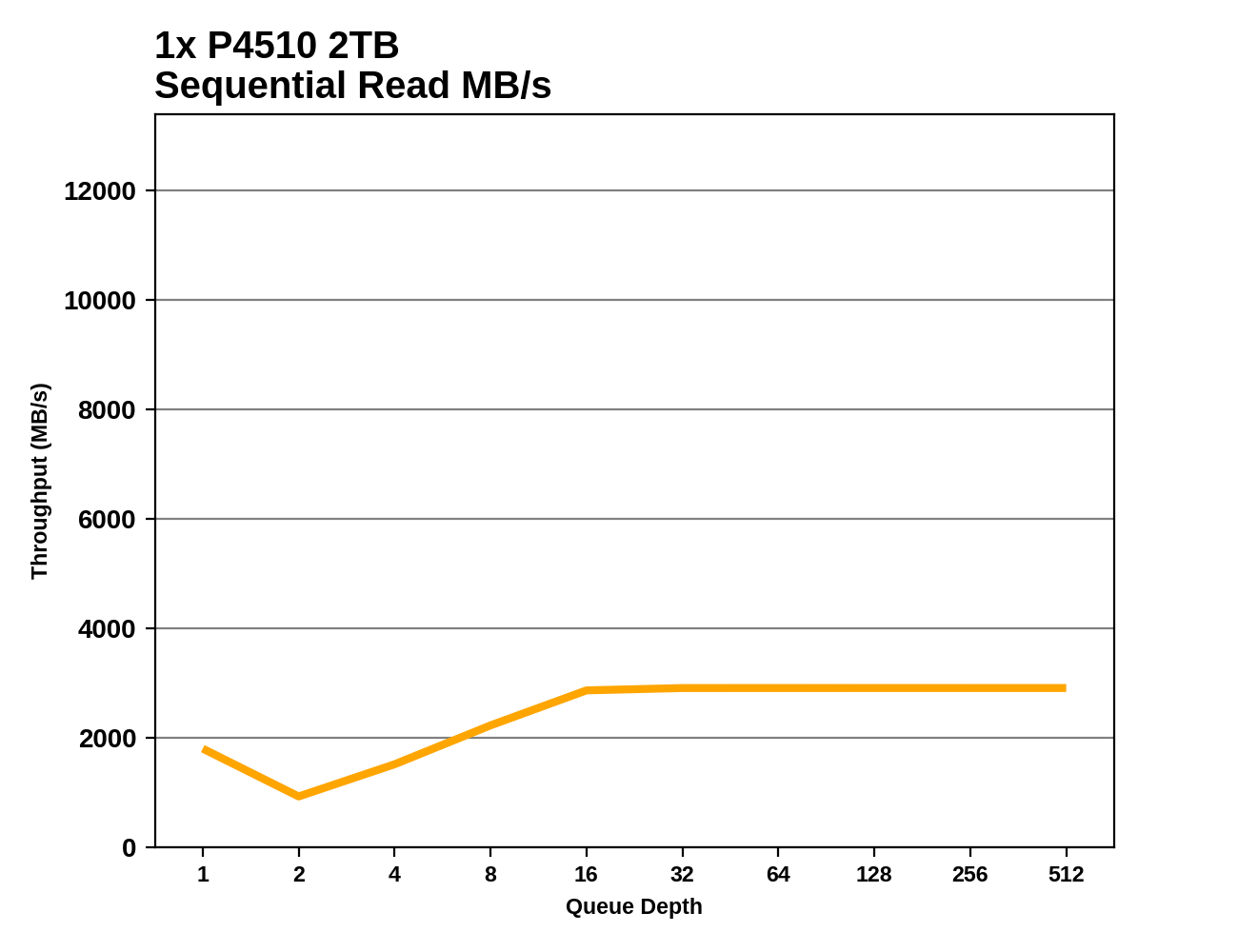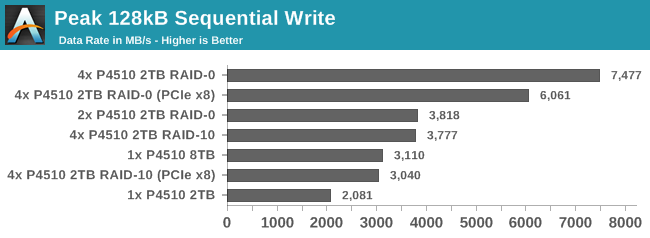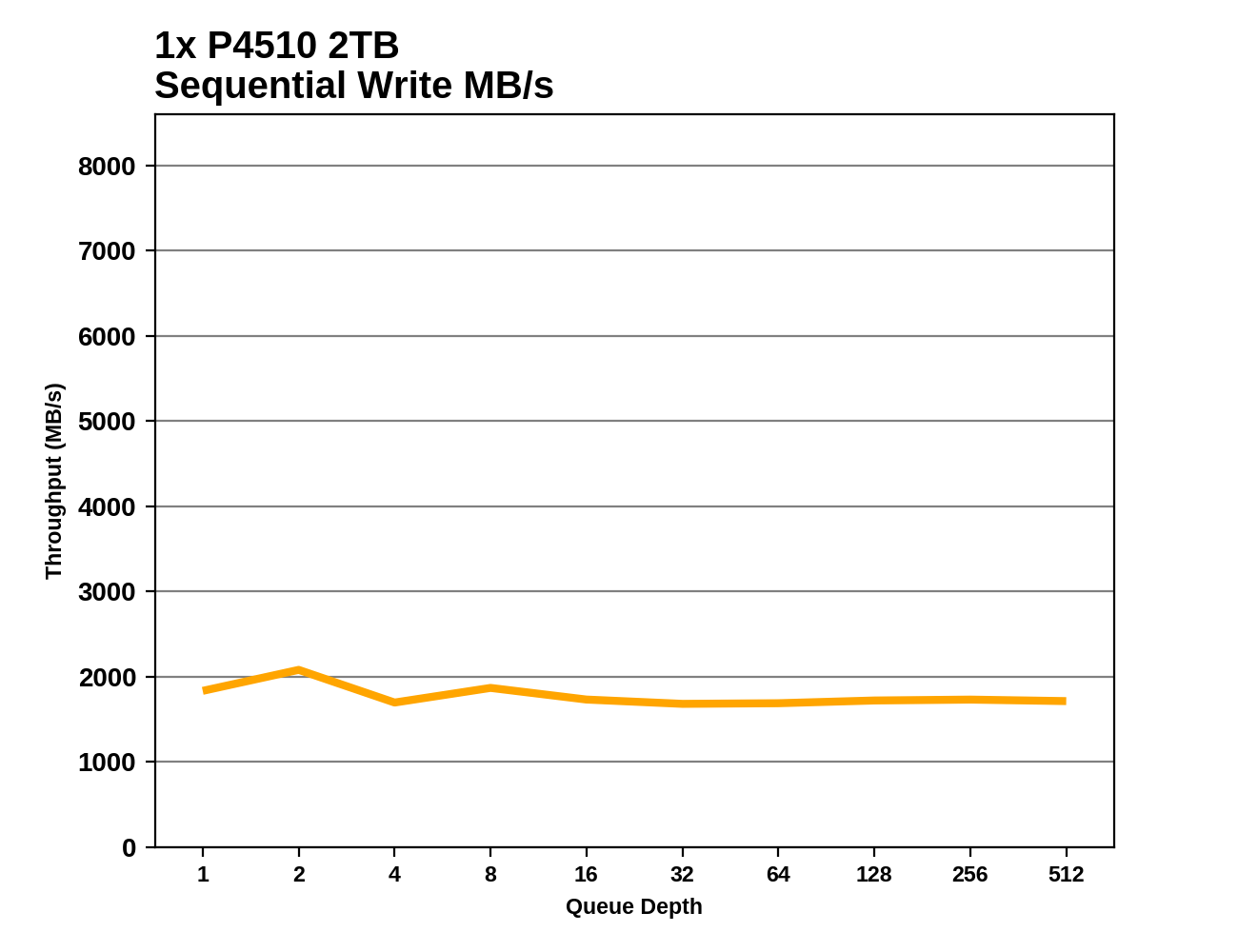The Intel SSD DC P4510 SSD Review Part 1: Virtual RAID On CPU (VROC) Scalability
by Billy Tallis on February 15, 2018 3:00 PM EST- Posted in
- SSDs
- Storage
- Intel
- RAID
- Enterprise SSDs
- NVMe
- U.2
- Purley
- Skylake-SP
- VROC
Sequential Read Performance
The structure of this test is the same as the random read test, except that the reads performed are 128kB and are arranged sequentially. This test covers queue depths from 1 to 512, using from one to eight worker threads each with queue depths up to 64. Each worker thread is reading from a different section of the drive. Each queue depth is tested for four minutes, and the performance average excludes the first minute. The queue depths are tested back to back with no idle time. The individual read operations are 128kB, and cover the span of the drive or array. Prior to running this test, the drives were preconditioned by writing to the entire drive sequentially, twice over.

The sequential read performance results are pretty much as expected. The 2TB and 8TB drives have the same peak throughput. The two-drive RAID-0 is almost as fast as the four-drive array configurations that were working with a PCIe x8 bottleneck, and with that bottleneck removed, performance of the four-drive RAID-0 and RAID-10 increases by 80%.
 |
|||||||||
All but the RAID-5 configuration show a substantial drop in throughput from QD1 to QD2 as competition between threads is introduced, but performance quickly recovers. The individual drives reach full speed at QD16 (eight threads each at QD2). Unsurprisingly, the two-drive configuration saturates at QD32 and the four-drive arrays saturate at QD64.
Sequential Write Performance
The structure of this test is the same as the sequential read test. This test covers queue depths from 1 to 512, using from one to eight worker threads each with queue depths up to 64. Each worker thread is writing to a different section of the drive. Each queue depth is tested for four minutes, and the performance average excludes the first minute. The queue depths are tested back to back with no idle time. The individual write operations are 128kB, and cover the span of the drive or array. This test was run immediately after the sequential read test, so the drives had been preconditioned with sequential writes.

The 8TB P4510 delivers far higher sequential write throughput than the 2TB model. The four-drive RAID-10 configuration requires more than PCIe x8 to beat the 8TB drive. The four-drive RAID-0 is about 3.6 times faster than a single 2TB drive, but only 2.4 times faster than the equivalent capacity 8TB drive.
 |
|||||||||
The sequential write throughput of most configurations saturates with queue depths of just 2-4. The 8TB drive takes a bit longer to reach full speed around QD8. The performance of a four-drive array scales up more slowly when it is subject to a PCIe bottleneck, even before it has reached that upper limit.










21 Comments
View All Comments
ckrt - Tuesday, February 20, 2018 - link
that and the other way around... virtualization for aggregation... with those 32 rulers adding up to a PETABYTE of storage and some neat high performance computing nodes using submerged liquid cooling, you can have the equivalent of a full small or medium business datacenter in just one 42u rack... man!... the posibilities!